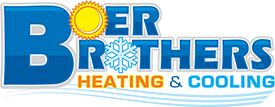Improving Indoor Air Quality
Understanding the concern
The EPA reports that indoor air is between 2-10 times higher in concentrations of pollutants than outdoor air and is responsible for many types of illness and reduction in quality of life. The EPA reports that indoor air quality is the most serious environmental problem in the United States.
Indoor air pollution inside the typical American home is typically 2-10 times higher than outdoor air pollution and by some estimates is responsible for as much as 50% of all illnesses. In fact, the U.S. Environmental Protection Agency (EPA) considers indoor air pollution the number one environmental health problem in the United States.
Did you know?
- That because of chemical outgassing of building materials and carpets, in addition to mold, mildew, dust mites and fungi that a baby inhales the equivalent of 4 cigarettes a day?
- That your home creates 40 pounds of dust a year per 1500 square feet of home space. These feed dust mites, bacteria, viruses and germs (most of it is actually human skin)
- Household cleaners to gas stoves impact every breath. Our good spirited efforts to create more insulated energy efficient homes mean that less air is exchanged with outdoor air and pollutants can accumulate more quickly than in less efficient home.
The EPA estimates that nearly 60% of all American homes are “sick” The air inside them is considered hazardous to breathe.
But we are not powerless, we are not drifting on the currents of life. We can take action! Dip our paddle in the waters of life and make change!
It comes down to one of three methods to improve you air quality in your home or business
- Source Control
- Improved Ventilation
- Air Cleaners
Source Control
It makes sense that the best way to improve your indoor air quality is to find and eliminate source of pollution or limit the emissions.
This means that some pollutants like asbestos can be enclosed or sealed away, other sources for example gas stoves can be optimized and have the burners cleaned so they burn cleaner. Source control also tends to be the least costly approach to creating higher quality indoor air as the other solution like improving ventilation and installing air cleaners do have additional costs. Quick fixes include not smoking in the home, switching to green cleaners and vacuuming more ( I know I hate it too but I notice a real difference when I do)
Ventilate
Another approach to lowering the concentrations of indoor air pollutants in your home is to increase the amount of outdoor air coming indoors.
Did you know that most comfort system don’t actually exchange air with outdoors? It is a closed system. When the weather is nice opening windows or doors and operating window or attic fans increase the outdoor ventilation rate Bathroom or kitchen fans do the same.
This is super important when you are painting or cooking (its not burned it just has a nice char), deep cleaning your home. Do those things outdoors if you can.
Advanced designs of new homes are starting to feature mechanical systems that bring outdoor air into the home. Some of these designs include energy-efficient heat recovery ventilators (also known as air-to-air heat exchangers). These system save the energy you have used to condition the home but allow for ventilation
The introduction of outdoor air is one important factor in promoting good air quality. New air can enter a home in several different ways.
- Natural ventilation, such as through windows and doors
- Through the indoor comfort system, such as through outdoor air intakes
- Through infiltration, Infiltration occurs in all homes to some extent. This is when air moves through cracks and seams in the home.
Air Cleaners
Most people don’t know that the filters in your home return grill are designed to protect the equipment from dirt, not the home occupant from poor quality indoor air.
Air cleaners are designed to pull pollutants, particularly particulate out of the air. Whole home systems, while more expensive that plug in units, are much more effective.
Air cleaners are generally not designed to remove gaseous pollutants but plants do a wonderful job of helping with this. See our latest blog on which plants are best.
Learn more about air cleaning systems
How effective an air cleaner is depends on how well it filters pollutants from the air(this is its efficiency rate) and home much air it can pull through the filter (in cubic feet per second. The best filters are efficient and pull lots of air. The long-term performance of any air cleaner depends on maintaining it according to the manufacturer’s directions. Otherwise that filter will inevitably get clogged.
If you are serious about providing top quality indoor air quality look into IAQ (indoor air quality systems)
Some of the most common types of Indoor Air Purification technologies include:
- HEPA (High efficiency particulate Air Filters can filter out 99.7% of allergens and bacteria but are not effective are removing gas pollutants like cigarettes and cleaners.
- Ultraviolet Lamps can be used to remove mold from the heating and cooling equipment
- Ionizer purifiers use electricity to charge ions that attach to airborne pollutants which then drawn into a charged plate which needs to be cleaned periodically
- Humidifiers and Dehumidifiers– to achieve a healthy home it is essential to maintain the proper level of humidity–too much moisture in the air can lead to the growth of mold and harmful bacteria, too little allows particles to remain airborne and can lead to increased instances of illness.
